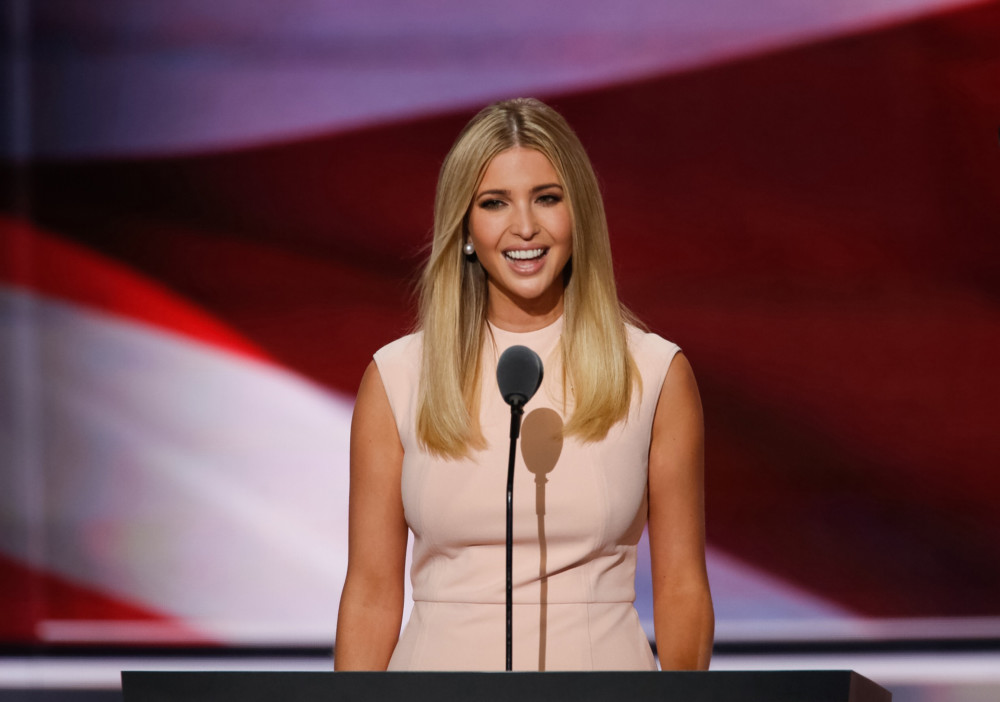By Sahil Kapur, Shannon Pettypiece and Stephanie Baker
Bloomberg News
WWR Article Summary (tl;dr) The plan Ivanka Trump is pushing would allow individuals earning less than $250,000 a year, or couples earning less than $500,000, to deduct the cost of child care expenses from their income taxes. Lower-income families without tax liability would get a rebate for their expenses in the form of a larger earned income tax credit.
WASHINGTON
Ivanka Trump has urged lawmakers writing a tax overhaul to include a deduction for child care expenses, but with a price tag of as much as $500 billion over a decade she may have trouble finding support in Congress.
Members of the House and Senate met with the president’s eldest daughter in the Roosevelt Room at the White House last week to discuss her proposed child care tax benefit, according to a person with knowledge of the meeting. President Donald Trump said earlier this month that he would soon propose a comprehensive tax overhaul, without offering any details.
Ivanka Trump’s involvement in tax negotiations between the White House and congressional Republicans is a signal of her influence with her father despite having no formal role in his administration.
Dina Powell, the former Goldman Sachs Group Inc. executive who is an economic adviser to the president, is helping Trump to ensure a tax overhaul includes both the child care benefit and a requirement that employers provide paid maternity leave, policies that she pressed her father to embrace on the campaign trail last year.
“Ivanka is really pushing that none of it gets passed unless it includes the child care tax plan,” said Sheila Marcelo, founder of www.care.com, a website to find babysitters and other caregivers. “She and Dina Powell are really pushing to make sure it gets included.”
In January, Ivanka Trump invited Marcelo to dinner at the home of Wendi Deng, the ex-wife of Twenty-First Century Fox Inc. co-Chairman Rupert Murdoch, to discuss her plans to focus on women’s empowerment during her father’s presidency. The dinner included top female executives, including International Business Machines Corp. Chief Executive Officer Ginni Rometty, Xerox Corp. Chairman and CEO Ursula Burns, and Deloitte CEO Cathy Engelbert.
It’s not clear whether Ivanka Trump is finding much appetite on Capitol Hill for her proposal. A deduction for child care expenses is both costly and regressive because it would favor wealthier families with two working parents. The deduction would cost the federal government $500 billion in revenue over a decade, according to an estimate by the Tax Foundation, a politically conservative, nonprofit research group.
“The child care proposal is generous and broad; almost everyone with young children will get some benefit from it. However, the largest benefits will go to relatively affluent dual-income families using paid child care,” said Alan Cole, an economist with the Tax Foundation.
Republican aides on the tax-writing House Ways & Means Committee have discussed a child care tax deduction with the Trump administration. The proposal is not a priority for House GOP leaders, who made no mention of child care in their tax-reform blueprint released in June 2016. The blueprint vows to eliminate “carve-outs and loopholes,” describing them as unfair and market-distorting, in favor of a flatter and simpler code.
“We’ve had some preliminary and very productive discussions with the Trump transition team and their desire to make child care more affordable for families,” the committee’s chairman, Kevin Brady, told reporters earlier this month. “So we’re exploring a number of options. They’ve brought some ideas forward, and it’s early in those discussions, but we’re having them.”
The cost of the plan is a problem for Republican congressional leaders, who are already struggling to win consensus in their party on revenue increases to offset trillions of dollars in proposed tax rate cuts. A tax overhaul that adds to the deficit would likely have to be temporary, to avoid a Democratic filibuster in the Senate.
In her July 2016 speech at the Republican convention, Ivanka Trump promised that her father would “focus on making quality child care affordable and accessible for all” if elected president. The remark was a surprise; Trump had made virtually no mention of the issue during the campaign. Soon, Trump said he was working on a child care plan, with his daughter’s input, and released it in September.
The plan Ivanka Trump is pushing is broadly similar to the outline Trump released in September, with his daughter at his side.
It would allow individuals earning less than $250,000 a year, or couples earning less than $500,000, to deduct the cost of child care expenses from their income taxes. Lower-income families without tax liability would get a rebate for their expenses in the form of a larger earned income tax credit.
The September proposal said the cost of the child care deduction could “more than be offset” by additional economic growth.
Trump said his plan also would guarantee six weeks of paid maternity leave by amending the existing unemployment insurance system. The measure would only apply to employers that don’t already offer paid maternity leave.
The leave plan would be “completely self-financing” by reducing fraud in the unemployment insurance program, Trump said in September.
Trump’s opponent, Democrat Hillary Clinton, decried the child care deduction as a boon to wealthier households with nannies and insufficient to help working families. Marcelo echoed that concern, saying the plan in its current form doesn’t help families whose incomes are too low to pay taxes and thus don’t benefit from deductions.
“It actually doesn’t help make child care affordable for the vast majority of working families,” Marcelo said. She hasn’t given Ivanka Trump her feedback on the plan yet, she said.
___
(With assistance from Lindsey Rupp)














































































































































































































































































































































































